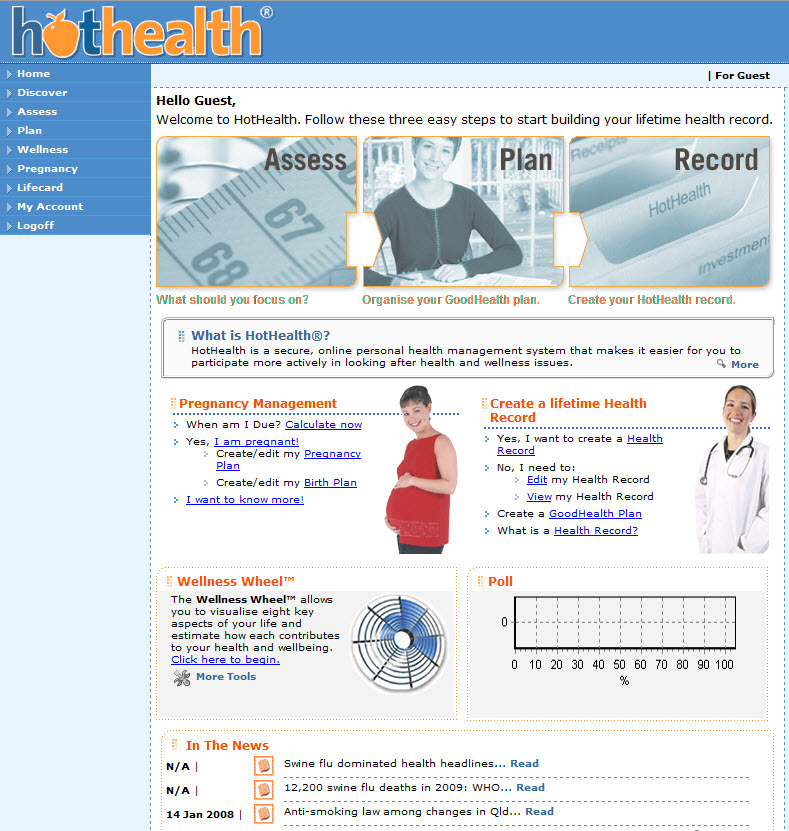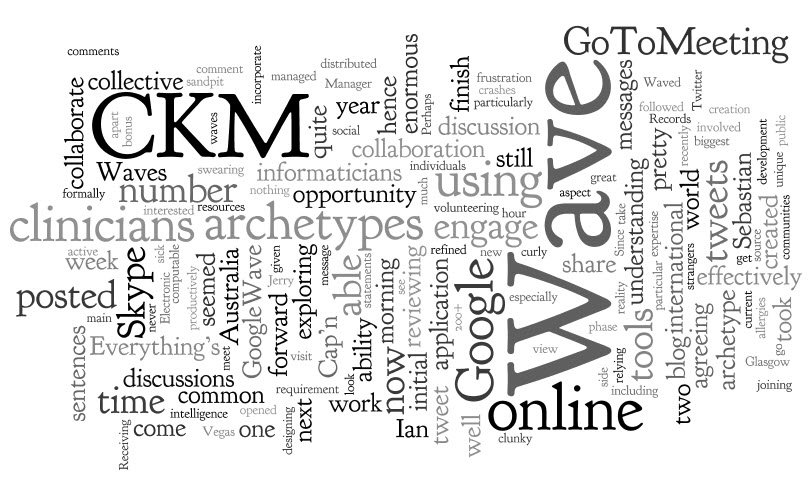 Following on from my April post regarding thoughts about Person Health Records, I've been working with Professor Dipak Kalra to clarify the definitions and purpose of PHRs. This work is intended to be part of a much larger document which describes PHRs and provides examples.
It is not an easy task - PHRs are difficult critters to pin down and most definitions are more a description, but here is my next take on trying to do so...
Following on from my April post regarding thoughts about Person Health Records, I've been working with Professor Dipak Kalra to clarify the definitions and purpose of PHRs. This work is intended to be part of a much larger document which describes PHRs and provides examples.
It is not an easy task - PHRs are difficult critters to pin down and most definitions are more a description, but here is my next take on trying to do so...
Personal Health Records are by their very nature hard to define and in order to tease out the breadth and depth of PHRs, it may be helpful to consider PHRs and clinical EHRs being positioned at two opposing ends of a spectrum of health records (see diagram). We could attempt to define a PHR as the direct counterpoint to an Electronic Health Record, but in practice the lines of demarcation are most often not clear nor desirable, except when viewed in terms of who has control over the health record and the content within.
While EHRs have traditionally been defined as “logical representations of information regarding or relevant to the health of a subject of care”, they have existed primarily for the purposes of the healthcare provider providing care to an individual. Information from EHRs may be made available to the subject of care or their authorised representative, upon request to the clinician who is acting as a steward of the health information. In some countries this is supported by specific legislation.
PHRs are also “logical representation of information regarding or relevant to the health of a subject of care”, however in the strictest sense these health records are primarily managed and controlled by the individual who is subject of care, or their authorised representative. The individual has rights over the clinical content held within a PHR, including the ability to delegate those rights to others, especially in the case of minors, the elderly or the disabled. The individual, or their authorised representative, is the key stake-holder determining that the content of the PHR is relevant and appropriate. Simplest examples include self-contained mobile phone applications that track a personal diet or exercise history – individual controlled and accessed only by the individual themselves.
However, in between these two strictest views of an EHR and a PHR is a continuum of person-centric health records with varying degrees of control, access and participation by the individual and their healthcare providers. Toward the EHR end of the spectrum, some EHRs provide viewing access or annotation by the individual to some or all of the clinician’s EHR notes. Conversely, at the other end of the continuum, some PHRs enable individuals to allow varying degrees of participation by authorised clinicians to their health information – from simple viewing of data through to write access to part or all of the PHR.
In the middle range of this continuum exist a growing plethora of person-centric health records that operate under collaborative models, combining content from individuals and healthcare providers under agreed terms and conditions depending on the purpose of the health record. Control of the record may be shared, or parts controlled primarily by either the individual or the healthcare provider with specified permissions being granted to the other party. For example a shared antenatal record may be either primarily a PHR, under auspice of the individual, permitting authorised health care providers to contribute content or directly edit part of all of the record itself, or it may be an extension of an organisations EHR, permitting the individual to view or directly contribute content to some or all of the record. The exact nature of the sharing of responsibilities and participations by each party needs to be specified in the terms and conditions of the health record.
Intent of health information with a PHR may be purely for use by the individual themselves or it may be used to share with healthcare providers and others, such as family members.
Ownership of the PHR can be complicated – requiring differentiation between moral ownership of the health information content and technical/legal stewardship for storing and securing the data. Storage of health information upon a PHR platform that is managed by a third party requires a formal relationship between the two parties so that individuals can assert their rights, as must the third party uphold their responsibilities.
The content scope for a PHR varies according to purpose, and is broader than most conventional EHRs. In the maximal scope a PHR may have a breadth that encompasses health, wellness, development, welfare and concerns; plus a chronological depth which embraces history of past events, actions and services; tracking and monitoring of current health or activities; and goals and plans for the future. Some PHRs will have a very general, summary focus; others may be activity-driven eg a diabetes management record within a Diabetes community portal or an personal fitness and exercise record. An individual may choose to have one single summary PHR or multiple activity driven PHRs, or a combination of both.
Acknowledgement: Prof Dipak Kalra, CHIME, University College London





